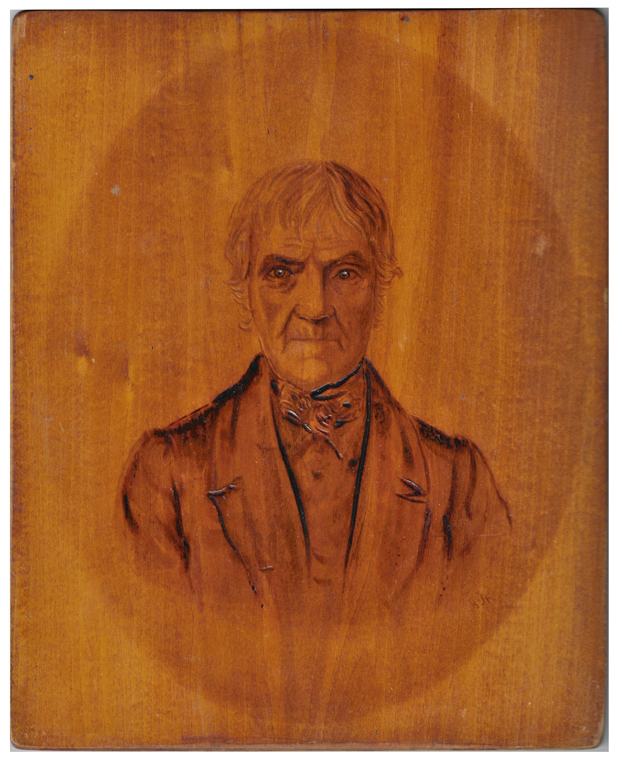
Dorchester Illustration 2722 portrait of Isaac Withington
The burnt poker portrait of Dorchester resident Isaac Withington was created by the artist Robert Ball Hughes. Isaac Withington was born in Dorchester in 1802 and died here in 1877. Ball Hughes was first a sculptor whose subjects were usually famous men and/or literary and artistic scenes. In this case he created a portrait of a nearby neighbor, Withington lived on Harvard Street, only a few blocks away from Ball Hughes’ home at 3 School St., so perhaps they were friends.
Robert Ball Hughes was an artist, born in London in 1804, who immigrated to America in 1829. He and his wife, Eliza, went first to Washington, D.C. In 1842, they moved to Dorchester, where Ball Hughes was commissioned to produce a bronze statue of mathematician and astronomer Nathaniel Bowditch. This statue was the first large bronze to be cast in the United States.
They lived on Adams Street opposite the site that would later become the Cedar Grove Cemetery. Then in 1851 they moved to 3 School St. at the corner of Washington and School streets. The house is still there, though quite altered. They entertained a number of celebrities including Charles Dickens and Jane Stuart, the artist.
Pyrography is the art of burning sketches into wood using a hot poker. A late 19th-century publication, “Wide Awake,” a serial miscellany of topics from art and literature, described the technique in 1885: [Regarding] “the drawing on wood with a hot iron (otherwise known as “poker-pictures”). The lines are burnt upon the wood and produce the effect when varnished, of a painting in glazed oils . . . . . the color of the burnt line being a rich brown upon the soft creamy tone of the wood.”
William Dana Orcutt said in “Good Old Dorchester” (Cambridge 1893), 385-386.
“Mr. Hughes manifested his artistic nature in more ways than one. He excelled, among other things, in executing what are known as “poker sketches.” These are pictures made on whitewood, the only tools used being pieces of iron, which were heated to a white heat. Every touch of the hot iron leaves a mark which cannot be effaced, and the work is so trying to the nerves that only a short time each day can be devoted to it. The effects of color can only be appreciated when seen. It seems incredible that such artistic results could have been produced in this way.”
There are a few examples of Ball Hughes’ other burnt poker drawings at these links:
http://www.geocities.ws/Paris/Rue/4029/antique.html
http://carverscompanion.com/Ezine/Vol8Issue5/KMenendez/KMenendez2.html
